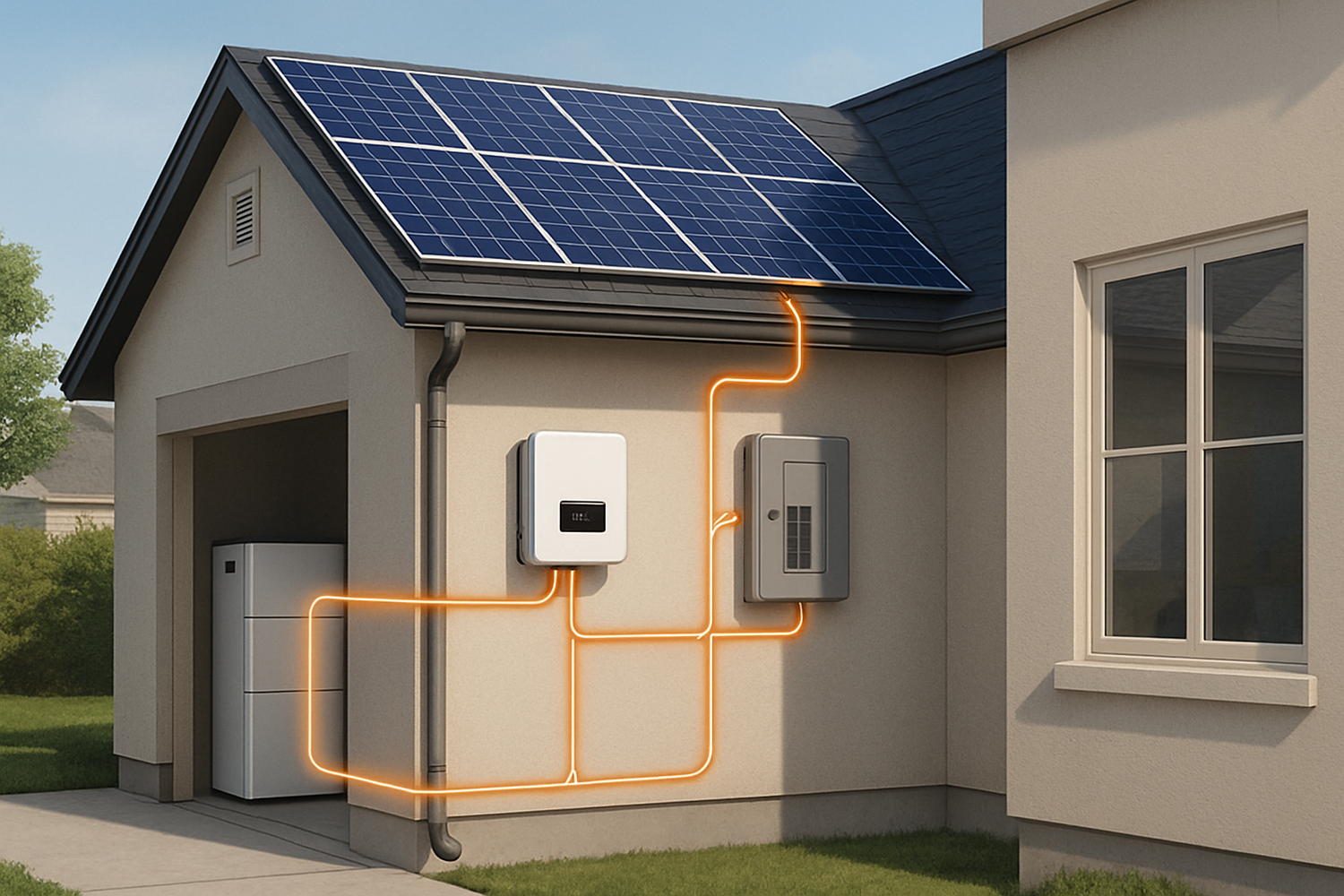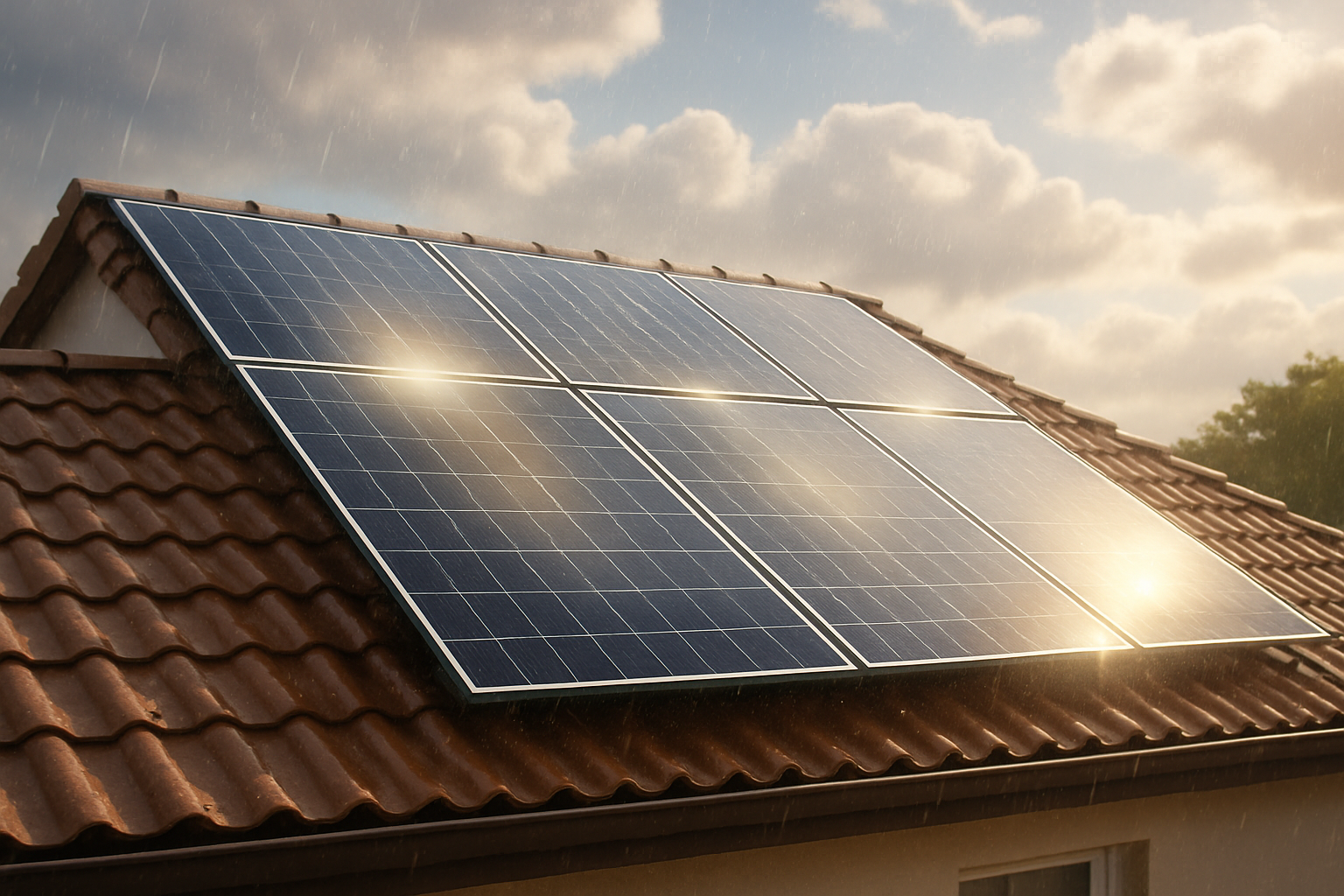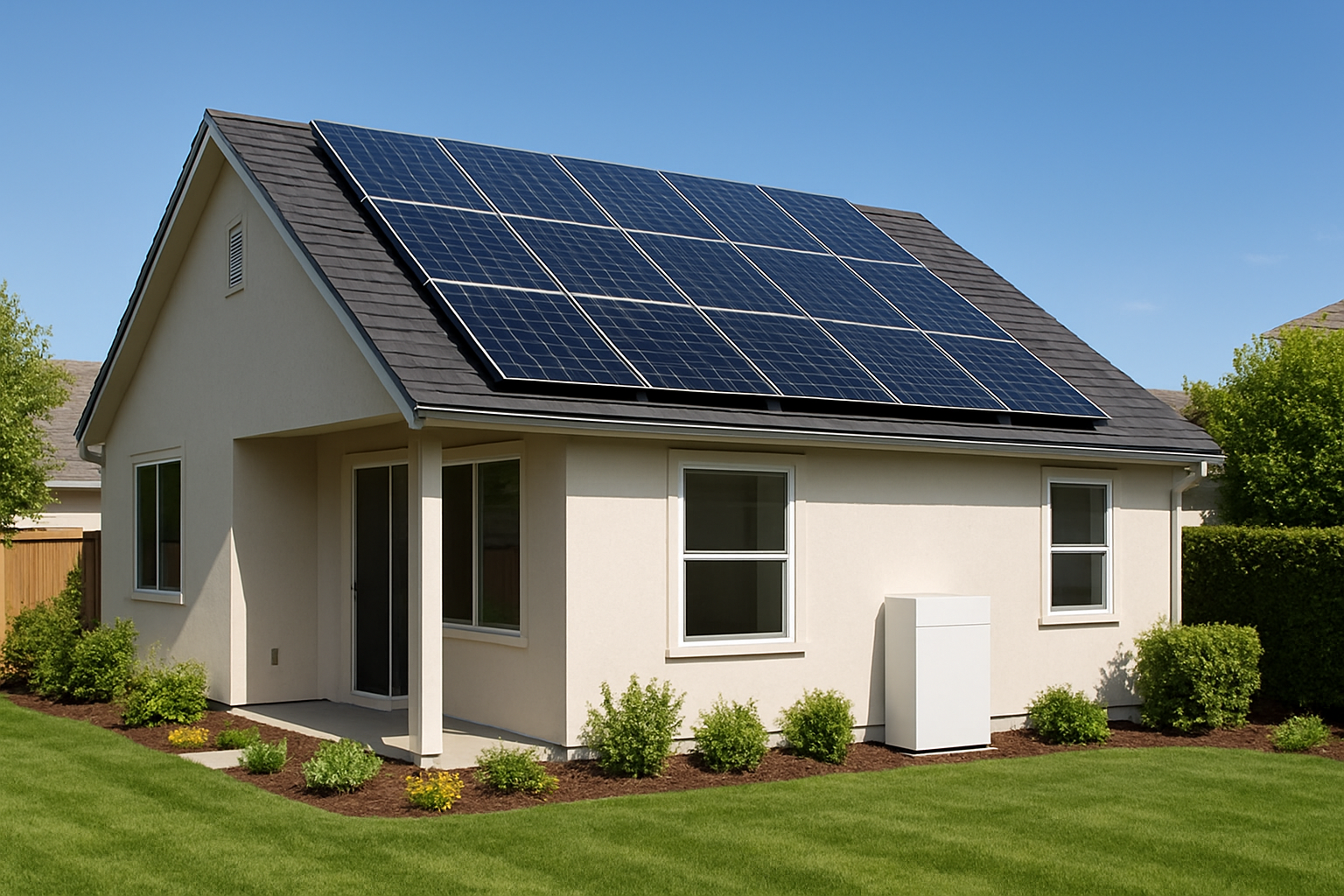Solar energy is rapidly transforming homes and how we consume electricity. As more homeowners embrace renewable solutions, a common question arises: Does solar truly add value to a property? Many perceptions exist, but understanding what professional appraisers actually assess is vital. This discussion clarifies how appraisers evaluate solar systems, moving beyond common misconceptions to reveal the real factors that influence your home's worth.
Solar has been found to consistently add value to homes, particularly for owned systems.
The Appraiser's Lens: Beyond Common Perceptions
Solar's Tangible Value Proposition
Solar energy is changing the dynamics of home buying and selling. Property owners often find that solar systems consistently add value to their homes. Appraisers consider the potential energy savings and increased marketability a solar-equipped property offers.
Real estate professionals need fair valuation methods for homes with solar. According to the EERE Success Story—Real Estate Professionals Embrace Solar Power, new data standards allow real estate agents to input detailed solar system information into property listings. This helps buyers make informed decisions and ensures sellers realize the full premium-boosting value of their solar installations.
Recent research, analyzing 5,000 California home sales between 2020 and 2023, indicates a significant impact. Homes with owned solar panels sold for 5% to 10% more than comparable properties without solar. For a California home valued at $790,000, this translates to an impressive $39,500 to $79,000 increase in resale value.
The Importance of Data Transparency
Transparent information is crucial for buyers. Details such as system size, age, ownership, energy output, and the data source empower informed choices. When information is inaccurate or missing, real estate transactions can become complicated, potentially causing sellers to miss out on solar's added value.
To address this, uniform solar data fields have been introduced into widely used real estate databases. Berkeley Lab, in collaboration with real estate, appraisal, and solar industry partners, developed standards for accurately capturing key solar system characteristics. These include the system's size, age, ownership status, energy output, and the source of the data.
Key Factors Appraisers Evaluate for Solar Systems
When valuing properties with solar installations, appraisers typically consider three primary valuation approaches: the market approach, the cost approach, and the income approach. The income approach, which assesses value based on the present value of the energy income a system is expected to produce over time, is often considered highly relevant for solar properties.

System Ownership and Age
Ownership is a pivotal factor in determining solar appraisal value. If the solar panels are owned outright or financed as a fixture to the property, they can increase the home's value and are included in the appraisal. This ownership can result in a higher sales price or more favorable financing terms.
Conversely, leased solar systems or those under a Power Purchase Agreement (PPA) generally do not add to the appraised value. Since the homeowner does not own these panels, they are not considered part of the property itself and can potentially be repossessed. While appraisers may still comment on the marketability of a home with such systems, the panels' value is not factored into the appraisal.
The system's age and its remaining useful life also impact valuation. Panels that appear well-maintained contribute more value, and appraisers may review maintenance history to assess this. A solar inverter, a crucial component that converts DC energy from panels to usable AC electricity, typically requires replacement every five to ten years.
System Size and Performance
The size of the solar system, measured in kilowatts (kW), directly correlates with its energy production capacity and the potential for utility bill savings. Larger, appropriately sized systems generate more energy, leading to higher valuations.
Actual energy output data and historical performance records are crucial for appraisers. Systems with a proven history of high output are considered more valuable, as they offer significant savings on energy bills. The quality of the components, including the solar panels, inverters, and any batteries, also plays a significant role in determining the system's reliability and overall value.
Integration and Energy Storage
The seamless integration of the solar system with the home's existing electrical infrastructure and its aesthetic appeal are important considerations. Professional installation and a clean, unobtrusive integration can enhance a property's marketability.
Solar inverters are vital for any solar power system. They convert the direct current (DC) electricity produced by solar panels into alternating current (AC) electricity, which is the standard form used by household appliances and the electrical grid. Beyond conversion, modern inverters also monitor system performance and facilitate connectivity with the grid.
Energy storage systems (ESS) are gaining increasing importance in property valuation. Pairing solar panels with battery storage allows a home to maintain power during grid outages, significantly enhancing resilience. Our company specializes in high-performance, safe, and reliable lithium iron phosphate (LiFePO4) batteries. These batteries are an excellent choice for household energy storage systems due to their high thermal stability, long cycle life (often exceeding 2,000 cycles), and environmental benefits. They enable homeowners to store excess solar energy generated during the day for use at night or on cloudy days, ensuring consistent electricity consumption.
Here is a summary of key factors appraisers consider:
| Factor | Appraiser's View | Impact on Value |
|---|---|---|
| System Ownership | Owned vs. Leased or PPA | Owned systems generally add more value; leased systems can complicate sales and often do not contribute to appraised value. |
| System Age | Remaining useful life, warranty status | Newer systems with longer warranties add more value. |
| System Size (kW) | Energy generation capacity | Larger, appropriately sized systems generate more energy and contribute to higher value. |
| Energy Production | Actual kWh generated, historical performance | Proven high output increases perceived and actual value. |
| Component Quality | Panels, inverters, batteries (e.g., LiFePO4), mounting hardware | High-efficiency, durable components enhance reliability and value. |
| Integration | Seamless integration with home electrical system, aesthetic appeal | Professional installation and clean integration improve marketability. |
| Documentation | Permits, warranties, production data, maintenance records | Comprehensive records provide confidence and support higher valuations. |
| Energy Storage (ESS) | Battery capacity, ability to provide backup power, grid independence features | Significant value add, especially for resilience and self-consumption. |
The Broader Energy Landscape and Solar's Influence
Policy, Incentives, and Market Dynamics
Governments have significantly supported solar energy through research and development funding and tax credits. For instance, California's program alone has invested approximately $3 billion in PV adoption incentives. (Nemet 2019)
Clean energy mandates, such as Renewable Portfolio Standards (RPS), require electric utilities to source a minimum percentage of their electricity from renewable sources. Specifically, fifteen states mandate or incentivize a certain amount of solar energy.
While RPS policies aim to promote clean energy, some studies suggest they have led to increased electricity prices. Research indicates that RPS mandates can cause electricity rates to rise by 11% within seven years and 17% within twelve years, with residential ratepayers often bearing the largest portion of this increase. Other analyses suggest grid costs have risen by around 3% due to RPS, though this increase is not always fully passed on to consumers. (Barbose 2021) It is also important to note that increased retail electricity rates can disproportionately affect lower and moderate-income households, who already spend a larger portion of their income on energy expenses. (Bednar and Reames 2020; Drehobl, Ross, and Ayala 2020) Despite these considerations, the ongoing decline in solar installation costs and a growing awareness of environmental benefits continue to drive widespread solar adoption.
Energy Independence and Resilience
Solar power offers a path to greater energy independence, lessening reliance on utility companies and safeguarding homeowners from fluctuating electricity prices. Off-grid solar solutions, which integrate solar panels, battery storage, and inverters, provide complete self-sufficiency. These systems are particularly valuable for remote locations or for those seeking autonomy from traditional utility services.
Our company develops integrated Energy Storage System (ESS) solutions. These systems combine high-quality lithium batteries, hybrid inverters, and solar panels to deliver reliable and scalable energy. Our goal is to help customers achieve true energy independence and robust resilience, especially during power disruptions.
Maximizing Your Solar Property's Value
Documentation is Key
To ensure an accurate appraisal, homeowners should maintain meticulous records of their solar system. This includes installation permits, detailed system specifications, all warranty information, and historical energy production data. Comprehensive documentation provides appraisers with the necessary information to substantiate their valuation analysis.
Maintenance and Performance
Regular maintenance is crucial for ensuring optimal system performance and extending the lifespan of your solar installation. A well-maintained system presents better value to appraisers and potential buyers. Simple practices, such as cleaning solar panels twice a year, can maximize their efficiency.
Strategic Upgrades
Consider strategic upgrades to enhance your property's value. This might involve integrating energy storage or upgrading to more efficient components. Adding lithium iron phosphate (LiFePO4) batteries, for example, significantly boosts a property's value. These batteries offer enhanced safety, a longer operational lifespan, and provide reliable backup power.
Upgrading to a modern solar inverter can improve overall system efficiency and allow for better integration with energy storage solutions. Our solar inverters efficiently convert DC power from your panels into usable AC power, ensuring seamless operation for your household.
The Future of Solar Homes
Solar energy systems, especially those that are homeowner-owned, significantly enhance property value when evaluated properly. The appraisal process hinges on specific system details, ownership status, and thorough documentation. Investing in solar is not just about immediate energy savings; it is an investment in a sustainable and independent energy future for your home. This long-term perspective offers both financial and environmental benefits for homeowners and contributes positively to the broader energy landscape.





Leave a comment
All comments are moderated before being published.
This site is protected by hCaptcha and the hCaptcha Privacy Policy and Terms of Service apply.